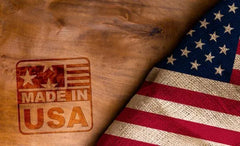
Amazon Prime Day 2025: Record Sales Amidst Economic Uncertainty
Table of Contents
- Key Highlights:
- Introduction
- The Surge in Online Sales
- Consumer Behavior Trends
- Market Dynamics and Future Implications
- The Broader Economic Context
- FAQ
Key Highlights:
- U.S. online sales soared 9.9% to $7.9 billion on the first day of Amazon's Prime Day, marking the largest e-commerce day of the year.
- The event, which began on July 8 and runs through July 11, 2025, has prompted competitors like Walmart and Target to launch their own promotional events.
- Despite a strong start, certain categories experienced softer demand, with consumer confidence impacted by ongoing tariff concerns.
Introduction
As retail landscapes shift and consumer habits evolve, major sales events like Amazon Prime Day have become pivotal for both retailers and shoppers. Launched in 2015, Prime Day has morphed from a simple promotional strategy to a significant event that not only boosts Amazon's sales but also influences the broader online shopping ecosystem. This year's event, commencing on July 8, 2025, has already set records, with online sales reaching $7.9 billion on its first day alone, according to Adobe Analytics. As consumers look for deals amidst a backdrop of economic uncertainty—including fluctuating tariffs and changing consumer confidence—Prime Day is more than just an online shopping event; it's a reflection of the current retail environment.
The Surge in Online Sales
The kickoff of Prime Day 2025 saw a remarkable 9.9% increase in online sales compared to the previous year, a sign that consumers are actively engaging in e-commerce as they seek out bargains. Adobe Analytics reported that this surge not only eclipsed the Thanksgiving sales of 2024, which totaled $6.1 billion but also positioned Prime Day as the most substantial e-commerce day of the year thus far.
This robust performance is particularly noteworthy as it comes amidst broader economic concerns, including rising inflation and its impact on consumer spending. The substantial growth in online sales suggests that while economic conditions are challenging, consumers are still eager to find value through promotions and discounts.
Competitors Join the Fray
In response to Amazon's Prime Day, major retailers have launched their own sales events, creating a competitive atmosphere that benefits consumers. Walmart initiated a six-day sales event that coincided with Prime Day, while Target kicked off its Circle Week promotions just days earlier. Best Buy also introduced a "Black Friday in July" promotion, showcasing the extent to which Amazon's Prime Day has reshaped retail strategies across the board.
These parallel sales events highlight a tactical shift among retailers who recognize the need to capitalize on the heightened consumer interest and spending during this shopping period. As Amazon continues to set the pace, competitors are strategizing their deals to not only retain customer loyalty but also attract new shoppers.
Consumer Behavior Trends
As the first day of Prime Day unfolded, several trends in consumer behavior became apparent. Home and outdoor goods emerged as categories with strong demand. This aligns with a broader trend observed post-pandemic, where consumers have increasingly invested in their homes and outdoor spaces. The desire for home improvement and outdoor leisure activities appears to drive purchasing decisions significantly during this promotional period.
However, not all categories fared equally. Traditional best-sellers such as beauty products and household essentials reported softer demand. This divergence in purchasing patterns may be attributed to a variety of factors, including consumer fatigue from prior shopping events or shifting priorities in spending.
Kashif Zafar, CEO of the advertising platform Xnurta, noted that while early Prime Day numbers might appear subdued compared to last year's surge, the extended format of this year's event—with four days instead of two—could alter purchasing rhythms. Consumers may opt to spread their purchases over several days rather than making large transactions in a compressed timeframe.
The Impact of Tariffs and Economic Concerns
This year's Prime Day arrives during a period of economic uncertainty, primarily due to complications arising from tariffs imposed under the previous administration. Consumer confidence has shown signs of wavering, with recent data from the Conference Board indicating a decline in June after a temporary improvement in May. Concerns about how tariffs could affect prices and the overall economy have led many consumers to approach spending cautiously.
Amazon CEO Andy Jassy addressed these concerns, asserting that the company has not seen significant price increases on its platform due to tariffs. Nevertheless, some third-party sellers have reported raising prices on products manufactured in China, indicating that tariffs are indeed affecting certain aspects of the marketplace.
Market Dynamics and Future Implications
As Prime Day continues, the evolving market dynamics will be closely monitored. Adobe anticipates that total online sales during the 96-hour event could reach $23.8 billion, equivalent to the sales volume of two Black Fridays. This projection underscores the growing significance of Prime Day in the retail calendar and its potential to shape consumer spending trends.
The success of Prime Day could also signal a shift in how retailers position themselves in response to economic pressures. As traditional retail faces challenges from e-commerce, events like Prime Day highlight the need for agility in marketing strategies. Retailers must adapt to changing consumer preferences and economic conditions to remain competitive.
The Role of Technology in Shopping Events
Technology plays a crucial role in the success of online sales events. Retailers are increasingly leveraging data analytics to understand consumer behavior and optimize their offerings. By analyzing shopping patterns, retailers can tailor promotions to meet consumer demands more effectively.
Moreover, advancements in artificial intelligence and machine learning are enhancing customer experiences. Personalized recommendations, dynamic pricing, and targeted advertising are becoming standard practices, allowing retailers to engage consumers in ways that resonate with their preferences.
The Broader Economic Context
As Amazon and its competitors engage in a fierce battle for consumer attention, the broader economic context remains a focal point. The ramifications of tariff policies and inflation on consumer purchasing power cannot be understated. Retailers must navigate these challenges while continuing to provide value to consumers.
The economic landscape is further complicated by shifting consumer priorities. Many shoppers are now more conscious of their spending, focusing on essential items or seeking products that provide long-term value. This trend could reshape inventory management and marketing strategies for retailers moving forward.
Conclusion: A New Era for Retail
The results of Amazon Prime Day 2025 will likely resonate throughout the retail sector long after the sales event concludes. As retailers adapt to shifting consumer expectations and economic realities, the strategies they implement will define the future landscape of e-commerce.
This year's Prime Day illustrates not only the resilience of online shopping but also the necessity for retailers to remain agile in a rapidly changing environment. By understanding consumer behavior, leveraging technology, and responding to economic conditions, businesses can position themselves for success in the evolving market.
FAQ
What is Amazon Prime Day? Amazon Prime Day is an annual shopping event exclusive to Amazon Prime members, featuring significant discounts on a wide range of products. It was launched in 2015 to attract new Prime subscribers and boost sales.
How do competitors respond to Amazon Prime Day? Competitors like Walmart, Target, and Best Buy have launched their own promotional events to capitalize on the increased consumer spending during Amazon Prime Day. These events often feature discounts similar to those offered by Amazon.
What categories saw the most demand during Prime Day 2025? During Prime Day 2025, home and outdoor goods showed strong demand, while categories like beauty and household essentials experienced softer sales.
How do tariffs affect online shopping events? Tariffs can lead to increased prices for products manufactured overseas, impacting consumer purchasing decisions. Retailers must navigate these cost increases while providing value to consumers.
What trends are shaping the future of retail? Retailers are increasingly leveraging technology, data analytics, and personalized marketing strategies to enhance customer experiences and adapt to changing consumer preferences amidst economic uncertainties.
POWER your ecommerce with our weekly insights and updates!
Stay aligned on what's happening in the commerce world
Email Address





